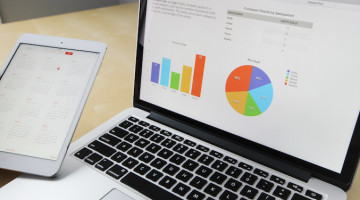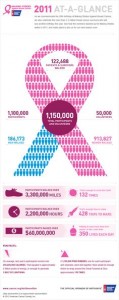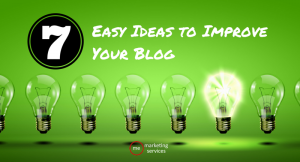
No matter whether you’re selling fashionable baby clothes, wooden bow ties, flashy tattoos or energy bars made of powdered crickets, online shopping has far surpassed the days of simply being a convenient way to make a purchase while in PJs.
Ecommerce has matured. This means you, as an online business owner, must do the same by considering your store’s traffic as much more than just a metric. Human beings are visiting your store to engage with your business. Now, more than ever, every decision you make, from picture quality to category navigation and color choices to shopping cart placement, impacts the rate at which your visitors convert to purchase.
If you’re making uneducated or gut-driven decisions when altering your ecommerce site experience, you will impact your online store’s conversion rate. This could mean lost sales and revenue, or, even worse, sending your customers to shop with a competitor.
That said, are you doing all you can to tailor your website experience to speak to your target audience? How are you guiding visitors to a desired action? How are you proactively answering questions? What about highlighting essential information? How about identifying and removing friction points?
Watch the this video in our #SellMore video blog series to learn about the importance of knowing and understanding your online store’s conversion rate –– as well as how to optimize it to increase store revenue.
What is conversion rate?
Conversion rate is defined as the number of people who come to your website and “convert” by taking whatever desired action you want for them to take. This could be folks who came to your site and signed up for your email newsletter, downloaded a piece of content or even those who came and ended up buying from your store. Whatever is it you’d like for your visitors to do, this will be what you measure.
For this post, we’re going to focus on turning shoppers into buyers once they arrive to your store.
Why is conversion rate so important?
Your store’s conversion rate is important for the mere reason that it is the metric by which you measure your business profitability. You can use the conversion rate to predict future success or use it to determine that something isn’t working. Then, you can use the conversion rate as a measuring stick as you attempt to fix the customer experience on your website.
Your conversion rate is a predictor of sales based on current sales data in combination with site visitor information. Below are some of the top reasons why knowing your conversion rate, on a daily, monthly, quarterly and yearly basis is so essential.
- No matter how “good” your conversion rate is, you can always make improvements which will boost your bottom line.
- Spending more on online marketing isn’t necessarily the answer to improving your conversion rate, especially when there may be friction points in your conversion funnel.
- Optimizing your store for conversions helps to capitalize on the potential new customers already browsing your site.
- By improving your conversion rate, you can actually lower your cost-per-acquisition , which is essentially how much acquiring a brand new customer costs.
- All of these savings mean more revenue for your brand , with which you can go ahead and spend more in other areas including online marketing, expanding your product catalog and so on.
- Improving your conversion rate is pretty much free .
How do you find your conversion rate?
No matter what ecommerce platform you’re using, you should be able to uncover your store’s shopper-to-buyer conversion rate inside of the back-end of your business via analytics reporting. Naturally, you can find some great metrics along side of your Bigcommerce store’s conversion rate right inside of your store’s control panel.

However, if for some reason you are with another ecommerce platform, you can also find this metric via in Google Analytics as well as other analytics services.
How is conversion rate calculated?
A quick example: If your online store is getting 5,000 visitors and 50 conversions for a set period, that means your store’s conversion rate is 1%. Simple as that!
This metric is so important to your business. If you’re spending time, energy and money funneling customers to your store and they are not converting well –– it’s all for not. Ensuring your business converts shoppers well is just as important as making sure you’re getting traffic to your site.
What’s a good conversion rate for an online store?
Typically, the higher your conversion rate the better, but there are a few factors to consider before making such a blanketed statement. Many companies and thought leaders throw around specific conversion rates of around 2-3% for online stores. Those numbers are likely the most common you’ll find. However, you’ll also find resources stating that a conversion rate of 5% is average for the ecommerce industry. Other reports will say conversion rates typically are more around 1%.
In all, it’s great to have a conversion rate goal, but what should that goal actually be?
Don’t get bogged down worrying about what the average rate is for online businesses. Your goal should be to work toward a conversion rate that’s better than what you have now. There are just too many variables that affect conversion, which makes it challenging to make an apples to apples comparison between different websites. Consider things like your target audience, the products you sell, your industry, the quality of traffic your driving to your business and more, all of which can play a large roll in your conversion rate.
Do set goals for yourself, however. If you’re conversion rate is .5% aim for 1%. Once you hit 1%, aim for 1.5%, and so on. Always be looking to improve your store to help convert shoppers into buyers as it’s critical to the health of your business.
What other metrics matter to conversion rate?
Beyond how well your store converts there are a few other metrics that matter when discussing conversion. These metrics include bounce rate and exit rate, as well as engagement metrics like average time on site and average page views. If you’re ready for more, take a look at these metrics via Google Analytics for your specific business as they will provide more insight for improving your online store’s user experience and overall conversion rate as well.
- Bounce Rate is the percentage of people who leave after viewing a single page. A high bounce rate is not a good thing – for some reason (or reasons), people aren’t finding what they’re looking for on your store, so they are leaving immediately after landing on your site.
- Exit Rate, often confused with bounce rate, is the percentage of people who leave after viewing the page. Your exit rate lets you know the last page that users view before they move on. A very high exit rate on a specific page can be a red flag.
You can find these metrics in your Google Analytics account under “Behavior > Overview”

- Average Session Duration is an engagement metric that gives you a general idea of how long people are sticking around your site. A high bounce rate means a low average time on site — visitors aren’t sticking around long enough to do whatever it is you want them to do (convert).
- Average Page Depth (AKA Pages per Session in Google Analytics) is an engagement metric that tells you how many pages a potential shopper visited before leaving. This metric is simply total pageviews per session duration. Note that more page views can mean more engagement but also can mean a lack of clarity in your conversion funnel if no conversion is present.
You can find these metrics in your Google Analytics account under “Audience > Overview”

(248)






